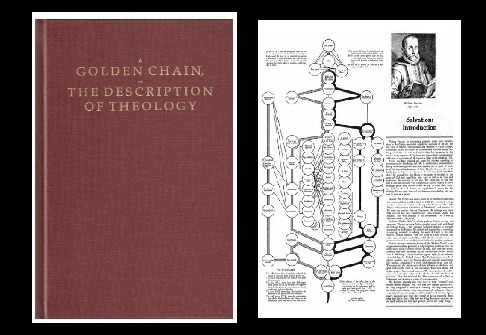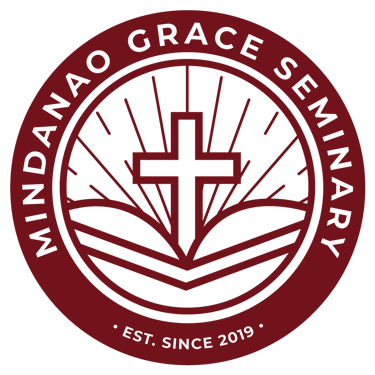New Covenant Theology and Reformed Baptists Part 1
A historical account of New Covenant Theology and initial observations.
Dr. B
7/9/20245 min read


History
New Covenant Theology (NCT) is, indeed, very new. It came into existence in the late 1970s. It was a reaction to the Reformed views of the Law as they relate to the New Testament believer. It would not be accurate to say that all those who embrace NCT today are Dispensationalists. On the other hand, without Dispensationalism there would be no NCT. We did not have pre-millennial Dispensationalism until the 1800s. The post-reformation and counter-reformation writings of Francisco Ribeira [1] and Manuel Diaz Lacunza [2] are the basis for Dispensationalism . Some of these works were translated from Spanish into English and introduced through the Keswick Conference in England[3]. Those conferences came to the United States, where Dispensationalism was fully developed at Dallas Theological Seminary. Through the Sunday School material of Moody Press, this new belief was spread to the Baptist and other North American churches.
In the writings of the Dispensationalist we find a radical separation between the ethnic nation of Israel and the New Testament Church. Because they saw no connection between the two, they further concluded that the means of salvation in the Old Covenant and in the New Covenant were different. The method of redemption in the Old Covenant was through obedience to the particular laws of that dispensation or age. Modern “Progressive Dispensationslists” believe that those regenerate people in both Israel and in the Church are saved by their faith in Christ. Both groups held the view that the Decalogue and the various laws were only for Israel and did not continue in the New Covenant Church. Drawing from Dispensationalism, NCT also sees only disconnection between ethnic Israel, the Law, and the Church.
Initial Observations on NCT
1) NCT is rooted in a system that starts with eschatology, moves to ecclesiology, and then creates a soteriology. Covenant Theology, on the other hand, starts with soteriology and then develops its views of ecclesiology. The primary concern of the Reformation was justification by faith. What we believe about salvation will determine how we view the church and if we are consistent.
2) NCT starts as a reaction to CT. It does not derive its origins from exegesis. This is not to say attempts have not been made to Biblically support the claims of NCT. CT starts with exegesis, particularly with the Reformers establishing Scripture alone as authoritative and then developing their view of soteriology from Scripture (Grace Alone and Faith Alone).
3) NCT men are either ignorant of, or chooses to ignore, that the Reformed Baptist view of CT is not the same as the Paedobaptists views. When I listen to or read them, the NCT men seem to think that Reformed Baptists are merely Presbyterians who immerse. They fail to see or acknowledge that the reason that Reformed Baptists reject infant baptism is that we have a different view of CT.
4) At minimum, there is a confusion of terms. It could possibly be that there is a misunderstanding of the structure of CT. It is understandable that if a person has been indoctrinated in Dispensational eschatology, when they hear the word “covenant,” they immediately think of God’s dealing with men. However, CT does not start in the Garden with Adam. CT is rooted in the purpose of the Godhead. The decrees of God are not only Trinitarian, but they are also pre-temporal. God (Father, Son, and Spirit) agreed and then decreed all that would come to pass before the foundation of the world.
5) They are allergic to using the term covenant. I am actually sympathetic, to an extent, to this reaction. Paedobaptists have a tendency to force presuppositions into Scripture that are not always there. An example of this would be their use of the phrase “sign and seal.” Just as a Charismatic can find a demon behind every ache, pain, and misfortune, our Paedobaptist brothers tend to see “signs and seals” that are not present on the surface of the text nor deduced by a normal reading. However, with regard to covenants, while we may not have the word stated, all the elements of a covenant, pledge, contract, or agreement are often present. Therefore, a rose- or covenant- by any other name is just the same. Numerous Reformed authors have gone to some length to demonstrate this to be true. The NCT men are either ignorant of these defenses or refuse to engage with the proofs presented.
6) The argument has been made in numerous places that CT was invented to defend infant baptism. This is putting the cart before the horse. Some have even said that Zwingli invented CT as a response to the Anabaptists, and that Zwingli was heavily influenced by Thomas Aquinas. As yet, I have seen no proof to establish these accusations. At best, this is a lack of scholarship. At worst, it is conjecture.
This does reveal an ignorance of Church history. While the Continental Reformers certainly believe that God’s covenant people are the Church, the fullness of CT was not expressed until the English (Puritan) Reformers. They take the doctrines established in the Reformation and develop the details with regard to God’s Covenants.
This brings me to another important point. We should consider the historical writings on a topic. It is good to go to the source and then trace further developments of an idea to contemporary times. It seems that many are arguing against views that they do not seem to understand. There is more of a knee-jerk reaction based upon presuppositions without in-depth study of the opponents position. This is easily proved by the misunderstandings and misrepresentations of CT that I have presented in this article.
There are two books written by Puritans that are essential to read on this topic. I would recommend the books A Golden Chain by Wm. Perkins and Economy Of the Covenants by Herman Witsius. These two books lay a clear foundation for CT. After reading them, it would be appropriate to read the Baptist views on CT. Let me recommend two books: Distinctiveness of Baptist Covenant Theology by Pascal Denault, and Covenant Theology From Adam to Christ by Nehemiah Cox and John Owen. There are other good books on the topic. I recommend a person start with these historical books first.
7) The NCT men seem to be confused about the Covenant of Redemption. In many of the books I read, the NCT men confuse and, even at times, conflate, the Covenant of Redemption with the Covenant of Grace. This makes me wonder if they have actually studied any of the historical writings on CT. To be clear, the Covenant of Redemption is rooted in the decree of God to redeem men. This Covenant is then expressed in time through the failed Covenant of Works (when Adam sinned in the Garden) and then in the implementation of the Covenant of Grace, where after the Fall, salvation could only be possible through faith in Christ. The CG is not the “one, overarching covenant,” as some NCT men have said. It is the Covenant of Redemption that is the overarching covenant. The CG does cover the Old and New Covenants, but is not present in the Covenant of Works.
8) I want to say here that it is incorrect to call the NCT “antinomian.” It is unfair and unjust to make this accusation against them. They are not denying that there is a law that Christians must obey. The NCT do say that the moral and other laws given to ethnic Israel were made obsolete by Christ. From their perspective, a new or another law applies to the Church age. They are technically "neonomian." They believe in a new law. This is not the Neonomianism we would find in Richard Baxter. The new law is, according to them, the Law of Christ. I will address the “Law of Christ” in a future article.
[1] In Sacrum Beati Ioannis Apostoli, & Evangelistiae Apocalypsin Commentarij, Francisco Ribeira, 1590.
[2] La venida del Mesías en gloria y magestad. Observaciones de Juan Josafat Ben-Ezra, hebreo-cristiano: dirigidas al sacerdote cristófilo Note: Lacunza wrote under the pseudonym Juan Josafat Ben-Ezra, 1791. See also: La venida del Mesías en gloria y majestad ("The Coming of the Messiah in Glory and Majesty), Manuel Diaz Lacunza, 1790.
[3] Origin and Errors of Dispensationalism, Barry G. Carpenter, 2023
